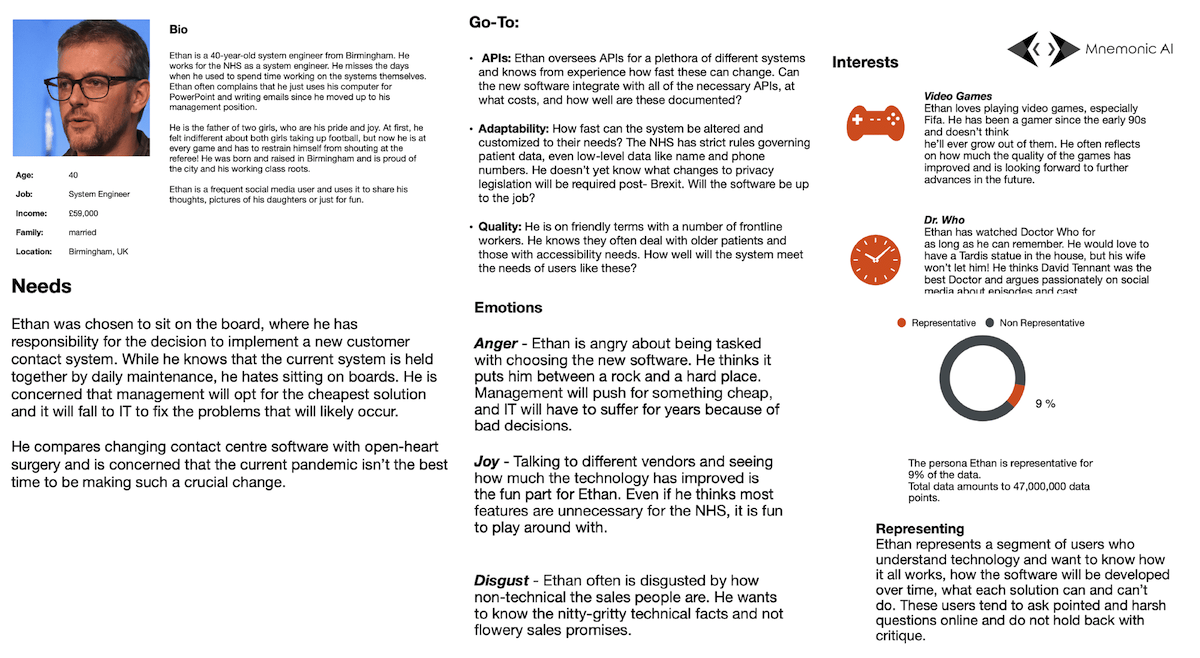Is your PPC campaign still based on expensive keywords? Trust me; we know the pain.
As with every startup, you are reinvesting your first revenue to drive growth. We intended to do the same - buying keywords on
buyer persona creation, and guess what, they were costly. The cost per click was around 15 USD, dominated by big players in the market like Hubspot that offer persona creation templates rather than an automated tool like ours. We decided pretty quickly that this is not the way to go.
Many marketers shift away from keywords towards a more target audience-driven approach for a good reason. But this is not the end of the road- the ultimate goal should be persona-based PPC campaigns.
Once you can answer the following questions about your customers, the easier it is to take performance to the next level.

Classic target audiences based on demographics might help you to find prospects easier. However, you are still missing the most important information - what does the customer need and how to create a message that grabs their attention.
You might identify them, but if you remain to talk to them in a one-size-fits-all approach, you certainly miss a massive potential. Therefore, you need to define a message and offer that matches the exact persona needs.
PPC Personas - How to start?
Build your personas! There are many ways to do so. First of all, gather as much quantitative and qualitative information as possible. Surveys, Google Analytics, Social Listening, CRM data, Shopify, etc., are valuable data sources. You need to detect common clusters that build the basis for your personas. What do specific clients have in common, and what is important to them. Try to understand what they are looking for and why, and how they feel about your product or service.

Map your personas
The more information you can gather about the demographics and the interests, the easier it is to find the right prospects. This seems pretty straightforward, but the challenge is now to address them with the right message.
Addressing the real needs & pain points
Referring to the example above with the Prince of Wales and the Prince of Darkness, I think the answer is obvious. Even though they share the same demographics, they should be addressed in very different ways. Analyzing the emotions and the real needs allows you to tailor the message to match the exact requirements. Here are some requirements of our sample persona Ethan.
Adaptability: How fast can the system be altered and customized to their needs? The NHS has strict rules governing patient data, even low-level data like name and phone numbers. He doesn't yet know what changes to privacy legislation will be required post-Brexit. Will the software be up to the job?
Therefore the ad copy should address the specific requirements:
Brexit and data? No problem - our system adapts to data laws in an instance. Your patient data is safe with us - see how it works.
Here another example:
APIs: Ethan oversees APIs for many different systems and knows from experience how fast these can change. Can the new software integrate with all of the necessary APIs, at what costs, and how well are these documented?
The ad copy could state:
See how our system integrates with a plethora of different APIs at no cost and in no time.
Additionally, once you collect leads, you need to make sure that they are being served correctly.
In Ethan’s case, he is anxious that IT will suffer from a cheap solution. Once Ethan is in the funnel, the sales team needs to address his concern. Ensure the sales team knows who they are dealing with and convince them that all client’s IT teams are super happy with the solution because it is easy to integrate and adjust. Additionally, Ethan should be approached by a technical-oriented salesperson rather than a flowery car-salesman type.
Persona Representativeness
Unless you have an unlimited marketing budget, you will continuously challenge allocating the budget most effectively. The better you understand your customer clusters, the easier it will be to allocate the budget. The most prominent clusters should have the majority of the budget.
Represents
Ethan represents a segment of users who understand the technology and want to know how it all works, how the software will be developed over time, what each solution can and can't do. These users tend to ask pointed and harsh questions online and do not hold back with critique.
Customer Journey based PPC Personas
You need to look closely at which customer journey stage the personas are since the requirements differ drastically from stage to stage. Not only what information is essential to them, but it will also define your PPC campaigns’ mediums and sources. Personas in the awareness stage are often targeted on FB with short video teaser campaigns. In contrast, personas in the consideration phase might require more detailed information about product attributes or pricing.
Persona-based PPC campaigns bring enormous potential. It saves costs by drastically reducing the click prices to collect leads and, most importantly, increasing the conversion by addressing the exact needs and pain points.